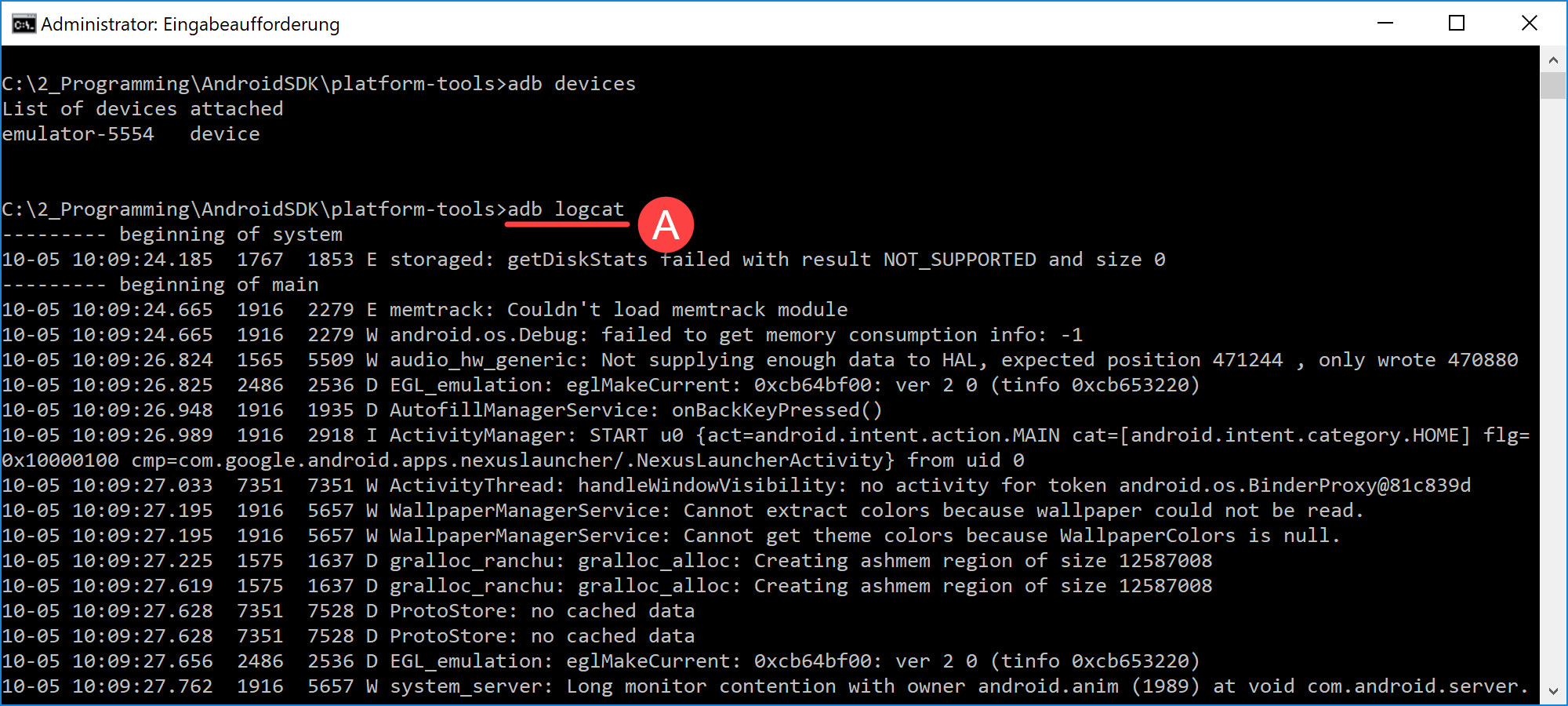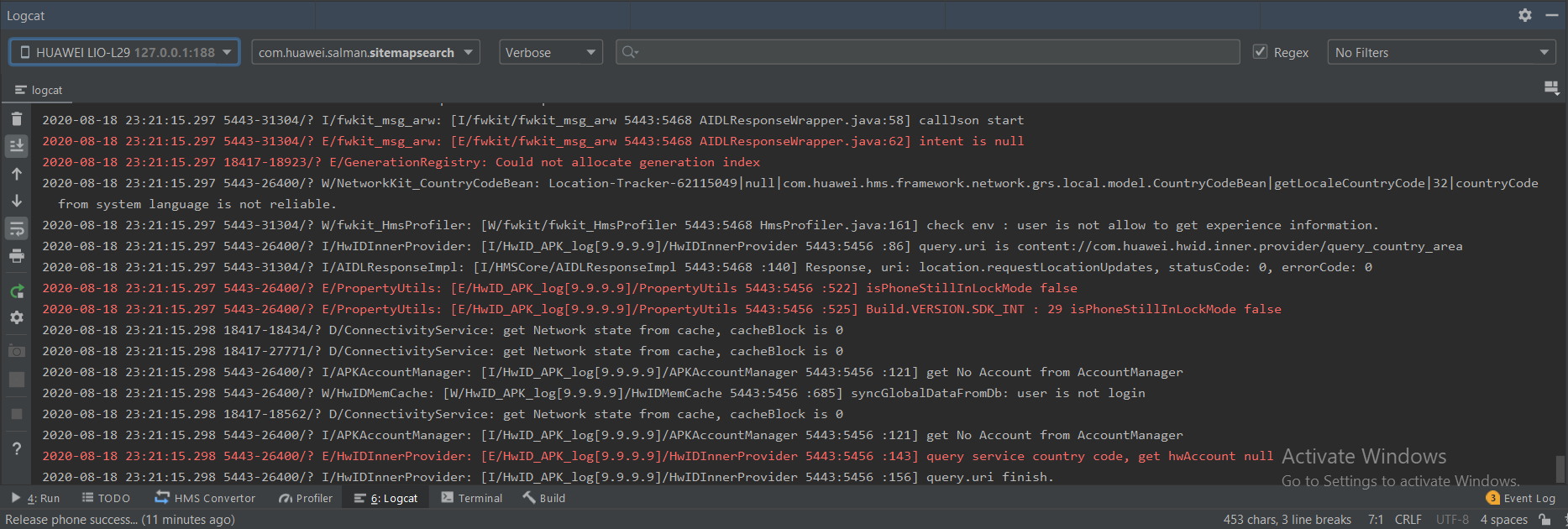
- Android studio debugging logs how to#
- Android studio debugging logs android#
- Android studio debugging logs code#
Click on this link to join the slack workspace.
Android studio debugging logs android#
*Important* : I’ve created a SLACKworkspace for mobile developers where we can share our learnings about everything latest in Tech, especially in Android Development, RxJava, Kotlin, Flutter, and overall mobile development in general. Hence, using Timber is one step in the right direction.
Android studio debugging logs code#
As my code got bigger and problems got more complex, I realized I needed to adopt better and more efficient debugging routines. Really lightweight library as it is just a wrapper over the already existing log utility.įor a long time I had ignored the use of log statements and printing out better logs.

For example, I’ve added class name, line number and method name from which the log statement is getting printed in the implementation above. Customized Meta-Data: You can include customized metadata with your log statements.You can implement this by using a custom debug tree (as shown above) which instead of logging to the logcat, sends the logs to your crashlytics service. Customized behavior on production: In production versions, you don’t want to log, although you definitely want to log any crashes that might occur.Hence, you no longer have to go through your entire code and manually remove all the logs. No need to manually remove Log statements: As already shown, it’s really easy to disable Logging for release apps.No need to worry about TAGS: Timber generates the TAGs automatically for you so you don’t have to worry about including a global TAG in every class.

Let’s look at some of the benefits of using Timber library instead of the default Log utility by android sdk. Result source: Benefits of using Timber vs Android Logging So, let’s create a custom application class and initialize our Timber library in it: class MainApplication : Application() Īs you can see, whenever there is an error, we can send the log to an online service such as Firebase CrashAnalytics or Crashlytics and not logging out on production. The best place to initialize timber is in the Application class which will be active during the entire lifetime of the application. With the dependency downloaded, now it’s time to initialize the timber library. At the time of this writing, this is the latest dependency version for timber: implementation ':timber:4.7.1' Initializing Timber Each button would print out different priority log statement on the console.Ĭreate a new project in Android and add a dependency for Timber in your app level adle file. We will be creating a simple Android application with 4 buttons. Let’s go ahead and create a sample application to see how you can include Timber in your android application and make your logging life easier. It takes care of most of the maintenance you need to do while logging so that you can focus more on writing great code and less on the maintenance stuff.

It is a light-weight, easy to use library. Well, problems such as these and many more are solved by a better logging library in android, called Timber (by Jake Wharton). Wouldn’t it be wonderful if the log statements would automatically disable themselves when in production? Wouldn’t it be great if the Log statements automatically picked up the TAG/classname while logging and you could just focus on writing better code? Now you have to find each one and remove it from your code for the release version.Īnother problem with the default logging mechanism is that you need to pass the TAG every time you write a log statement. There are so many log statements all over your code. So, when releasing your application to the play store, it is recommended to remove all the log statements from your code.īut this can be a real pain.

Similarly, it is not recommended to have log statements in your release ready code, since those log statements can be read by anyone who connects their phone to a PC. These statements help you keep a track of flow control in your application. It is generally a good practice to place Log statements in your code. It is really helpful in debugging your code when debugging by break-point just won't work. Logging is one of the most used utilities in the Android framework.
Android studio debugging logs how to#
By Ayusch Jain How to log more efficiently with Timber


 0 kommentar(er)
0 kommentar(er)
